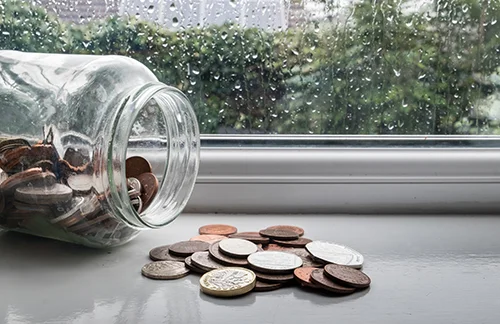Imagine missing a R500 store card payment, thinking, “I’ll catch up next month,” only to face R2,000 in fees and a blacklisted credit record a year later. This is the reality for many, with over 10.4 million South Africans classified as credit-impaired in 2024, according to the National Credit Regulator (NCR). Unpaid debt doesn’t just dent your bank account—it erodes your ability to secure loans, rent a home, land a job, and maintain your mental health. In South Africa’s tough economy, where 8.5% inflation (Stats SA, February 2025) and 32.1% unemployment (Q4 2024) squeeze budgets, understanding these hidden costs is crucial. This blog unpacks the true impact of unpaid debt, from compounding interest to life-altering consequences, using real data, local stories, and actionable solutions. You’ll explore the debt landscape, compare how institutions handle defaults, see long-term effects through real scenarios, and learn practical steps to escape or avoid debt traps. Whether you’re juggling store accounts or tempted by mashonisa loans, these insights will empower you to take control and build a debt-free future.
The Landscape of Consumer Debt in South Africa
South Africa’s debt crisis is staggering, with 25.6 million credit-active consumers in 2024, of whom 40% are in arrears, per the NCR’s Q3 2024 Credit Bureau Monitor. The average household spends 63% of income on debt repayments, according to DebtBusters’ Q4 2024 report, driven by rising costs and stagnant wages. Unsecured lending—short-term loans, payday loans, and store accounts—has surged, with R210 billion in unsecured credit outstanding, up 12% from 2023 (NCR). Common debt types include store accounts (e.g., Edgars, Jet), credit cards (Visa, Mastercard), personal loans from banks like FNB or Capitec, student loans via NSFAS, and informal loans from mashonisas in townships like Khayelitsha. Major institutions involved are banks (ABSA, Standard Bank), credit bureaus (TransUnion, Experian, XDS), micro-lenders (Wonga, Bayport), and unregulated loan sharks. Digital lending apps, often advertised on WhatsApp, fuel the crisis, charging 60% interest on R1,000 loans in a month. To get a grip, check your credit report free at TransUnion, track spending with Vault22, and join a stokvel to save. Understanding this landscape is the first step to avoiding debt’s hidden traps.
The Visible vs. Hidden Costs of Unpaid Debt
Unpaid debt’s immediate costs are painful but visible: late fees (R50–R150 per missed payment), interest rate hikes (e.g., 20% to 25% on credit cards), and debt collection charges (R500–R2,000). The hidden costs, however, are far more damaging. A damaged credit score—dropped by 100 points for a missed payment—blocks access to affordable loans, forcing you into high-interest options; a score below 600 can add 5–10% to loan rates, per Experian 2024 data. Employment barriers arise when employers, especially in finance or government, check credit reports, rejecting candidates with defaults. Housing limitations hit hard—landlords and banks deny rentals or home loans to those blacklisted, leaving families stuck in unstable situations. Mental health suffers, with 65% of indebted South Africans reporting anxiety or depression, per a 2023 Sanlam survey, and relationship strain contributes to higher divorce rates. For example, a 27-year-old Gauteng teacher with a R10,000 Jet store card debt, missing payments, paid R30,000 over five years due to 25% interest, R1,500 in fees, and legal costs, plus lost a job opportunity due to her credit record. To mitigate, list all debts, prioritize payments, and seek free counselling from the NCR.
How Different Institutions Handle Unpaid Debt
Institutions in South Africa handle unpaid debt differently, impacting your financial future. Banks (FNB, Standard Bank) initiate collections after 90 days, adding R100–R500 fees and 2–5% interest hikes, escalating to legal action by 180 days, risking asset repossession (e.g., cars, homes). Micro-lenders (Bayport, Wonga) act immediately, charging R50–R200 late fees and up to 60% interest, with some illegally seizing goods, per NCR complaints. NSFAS pursues garnishee orders after graduation, deducting salaries without repossession, but delays job prospects. Retail stores (Edgars, Truworths) hire debt collectors after 60–90 days, listing defaults with bureaus, adding R500–R1,000 fees but no repossession. Mashonisas, unregulated, demand repayment within 30 days, using threats or seizing valuables, with 120–300% interest. Blacklisting via credit bureaus (TransUnion, XDS) lasts 5–7 years, while civil judgments (court orders) or administration orders (for debts under R50,000) limit credit access for a decade. Debt review, overseen by NCR-registered counsellors, restructures payments but restricts new credit, unlike sequestration, which clears debt but seizes assets. To navigate, request payment plans from creditors, verify lender registration, and use NCR’s complaints portal. Here’s a comparison:
| Institution Type | Response to Unpaid Debt | Timeline | Penalties | Repossession Risk |
| Banks | Collections, legal action | 90–180 days | Fees, interest | Yes (assets) |
| Micro-lenders | Aggressive collections | Immediate | High fees | Sometimes illegal |
| NSFAS | Garnishee orders | Varies | Legal action | No |
| Retail stores | Debt collectors, listing | 60–90 days | Fees, listing | No |
| Mashonisas | Threats, seizures | 30 days | 120–300% interest | Yes (informal) |
Long-Term Financial Impact: Real Stories & Scenarios
Unpaid debt’s long-term effects ripple through lives, as real South Africans show. Case Study 1: Sipho, a 35-year-old Johannesburg Uber driver, defaulted on a R20,000 Capitec personal loan. Blacklisting blocked him from financing a newer car, cutting his income by 30% as his old vehicle broke down, and stress strained his marriage. Case Study 2: Naledi, a 40-year-old rural Limpopo nurse under debt review for five years, repaid R15,000 in store debts but couldn’t secure a home loan, forcing her family to rent at R6,000/month—R360,000 over five years versus a bond’s R200,000. Scenario 1: Borrowing R5,000 at 20% monthly interest from a mashonisa costs R16,000 in a year, versus R5,600 with a Capitec loan at 15% annually, saving R10,400. Scenario 2: A 22-year-old with R10,000 unpaid credit card debt at 20% interest pays R30,000 by age 27, missing R20,000 in retirement contributions that could grow to R150,000 by age 60 at 8% returns. To avoid this, review debts monthly, seek debt review early, and save R100 weekly to rebuild creditworthiness.
Practical Solutions: What South Africans Can Do Today
Escaping or avoiding debt traps requires actionable steps tailored for South Africans.
1. Know Your Credit Status: Get a free credit report from TransUnion (www.transunion.co.za), Experian, or MyCreditCheck yearly. Check for errors, defaults, or unrecognized accounts, and dispute inaccuracies via email templates on the NCR website.
2. Negotiate with Creditors: Contact banks or retailers (e.g., FNB, Edgars) to request payment holidays or settlements—use scripts like, “I’m committed to paying; can we reduce instalments for three months?” Success rates are 60% for on-time communicators, per DebtBusters.
3. Avoid Loan Sharks: Mashonisas charge 120–300% interest; instead, join stokvels (R200/month contributions) or apply for Capitec consolidation loans at 15–20% interest.
4. Use Accredited Help: Engage NCR-registered debt counsellors (find at www.ncr.org.za) or NGOs like Black Sash or Finwell for free budgeting workshops.
5. Build a Budget & Emergency Fund: Use Vault22, Stash, or Excel to track expenses; allocate 60/20/20 (needs/wants/savings) and save R50/week in a TymeBank GoalSave account for emergencies.
6. Tap Government Support: Explore NSFAS financial literacy courses, SEDA micro-loans for small businesses, or NYDA grants to generate income. To start, download a budget app, request a credit report, and contact a counsellor today.
Policy Gaps & Systemic Issues
South Africa’s debt crisis is worsened by systemic flaws. Predatory lending loopholes allow mashonisas and unregistered micro-lenders to operate unchecked, with 70% of informal loans unreported, per FinMark Trust 2023. NCR enforcement struggles, with only 150 inspectors for 6,000+ lenders. Low financial literacy—only 30% of South Africans understand basic finance, per a 2024 Sanlam survey—leaves people vulnerable to traps. Schools lack mandatory financial education, unlike countries like Australia, where it’s integrated by Grade 10. Solutions include mandating financial literacy in Grades 10–12, increasing NCR inspections, and incentivizing banks to offer low-cost rehabilitation loans (e.g., Capitec’s 10% interest plans). Community campaigns, like Black Sash’s debt awareness drives, can bridge gaps. To push change, join local financial literacy groups or email your MP to advocate for curriculum reform.
Building a Debt-Free Future
Unpaid debt’s hidden costs—skyrocketing interest, blocked jobs, denied homes, and mental strain—steal more than money; they delay your dreams. A R10,000 store card debt can cost R30,000 and years of opportunity, but proactive steps can stop the spiral. Check your credit report, negotiate with creditors, join a stokvel, budget with Vault22, or call an NCR debt counsellor today. As financial coach Sam Beckbessinger says, “Debt isn’t just a financial trap—it’s a life delay.” South Africa’s economy is tough, but with knowledge and action, you can outsmart debt. Start small: save R50 this week, download a free credit report, and commit to one budget review. Your debt-free future begins now.


